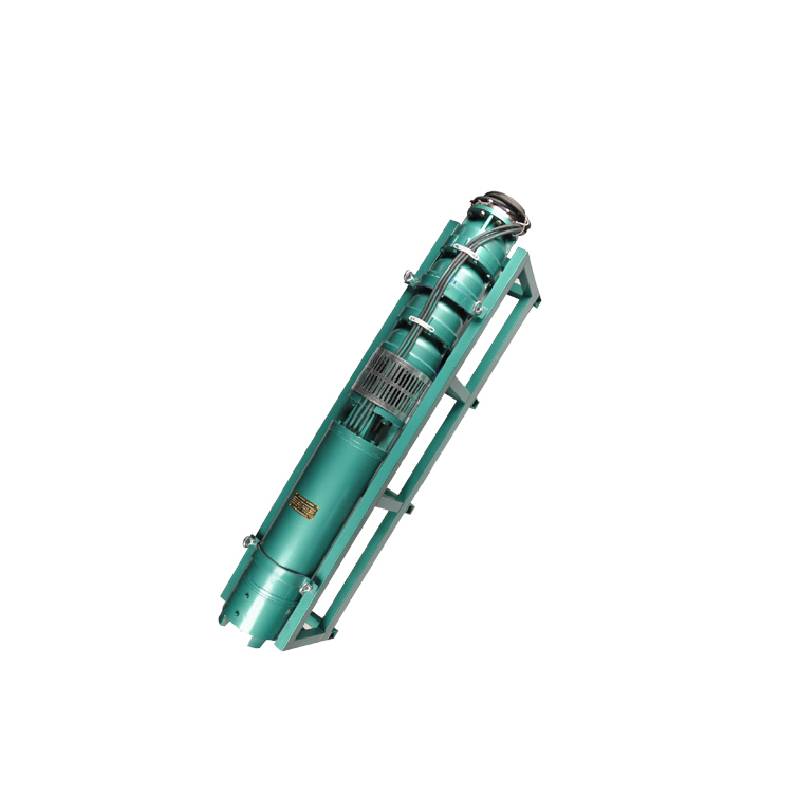Dec . 12, 2024 10:37 Back to list
Submersible Pumps for Efficient Drainage Solutions in Various Applications
The Essential Guide to Submersible Drainage Pumps
When it comes to managing water efficiently, submersible drainage pumps play a crucial role in a variety of applications. From residential basements to industrial sites, these pumps are designed to handle the removal of excess water and protect against flooding caused by heavy rain, groundwater, or other unexpected water intrusions. In this article, we will explore the workings, advantages, and considerations to keep in mind when selecting a submersible drainage pump.
What is a Submersible Drainage Pump?
A submersible drainage pump is a type of pump that is sealed and submerged in the liquid it is designed to move. Unlike traditional pumps that are installed above the water level, submersible pumps operate underwater, minimizing the risk of clogging and damage from debris. They are specifically engineered for pumping out standing water in various environments, such as basements, construction sites, and flooded areas.
How Does It Work?
Submersible pumps work on a straightforward principle they use a hermetically sealed motor that is connected to a pump body. When the pump is submerged, the motor rotates the impeller, creating a centrifugal force that pushes water upward through the discharge outlet. This efficient design allows the pump to move large volumes of water quickly and effectively, often capable of handling solids or debris up to a certain size, depending on the specific pump model.
Benefits of Submersible Drainage Pumps
1. Efficiency Submersible pumps are often more efficient than other types of pumps. They can function optimally while submerged, reducing energy use and costs associated with operation.
2. Portable and Versatile Many submersible pumps are designed to be portable, making them easy to relocate as needed. They are suitable for various applications, including residential uses for draining flooded basements or exterior areas, and industrial tasks like dewatering construction sites.
3. Reduced Noise As these pumps operate underwater, they produce less noise compared to the standard pumps, which can be a significant advantage in residential areas.
submersible drainage pump

Considerations When Choosing a Submersible Drainage Pump
When selecting a submersible drainage pump, consider the following factors
1. Water Capacity and Flow Rate Evaluate the volume of water you need to move and choose a pump with an adequate flow rate, typically measured in gallons per minute (GPM) or liters per second (L/s).
2. Head Pressure This refers to the height that the pump can lift water. Assess the total height from the water level to the discharge point to ensure the pump can handle it.
3. Solid Handling Capability If you anticipate pumping water with debris, choose a pump specifically designed to handle solids. Look for models that indicate their maximum solid size tolerance.
4. Durability and Material Since these pumps are submerged, choose one made from corrosion-resistant materials like stainless steel or thermoplastic to ensure longevity, especially in harsh environments.
5. Power Source Submersible pumps can be powered by electricity or gasoline. Consider your situation and preferences when selecting the power source.
Conclusion
Submersible drainage pumps serve an essential purpose in managing water and prevent potential property damage from flooding. By understanding how these pumps work and considering the vital factors in selection, users can ensure they have the right equipment to tackle their water removal challenges effectively. Whether for household use or in industrial applications, investing in a quality submersible drainage pump is a crucial step in water management and protection.
-
Submersible Water Pump: The Efficient 'Power Pioneer' of the Underwater World
NewsJul.01,2025
-
Submersible Pond Pump: The Hidden Guardian of Water Landscape Ecology
NewsJul.01,2025
-
Stainless Well Pump: A Reliable and Durable Pumping Main Force
NewsJul.01,2025
-
Stainless Steel Submersible Pump: An Efficient and Versatile Tool for Underwater Operations
NewsJul.01,2025
-
Deep Well Submersible Pump: An Efficient 'Sucker' of Groundwater Sources
NewsJul.01,2025
-
Deep Water Well Pump: An Efficient 'Sucker' of Groundwater Sources
NewsJul.01,2025
-
 Submersible Water Pump: The Efficient 'Power Pioneer' of the Underwater WorldIn the field of hydraulic equipment, the Submersible Water Pump has become the core equipment for underwater operations and water resource transportation due to its unique design and excellent performance.Detail
Submersible Water Pump: The Efficient 'Power Pioneer' of the Underwater WorldIn the field of hydraulic equipment, the Submersible Water Pump has become the core equipment for underwater operations and water resource transportation due to its unique design and excellent performance.Detail -
 Submersible Pond Pump: The Hidden Guardian of Water Landscape EcologyIn courtyard landscapes, ecological ponds, and even small-scale water conservancy projects, there is a silent yet indispensable equipment - the Submersible Pond Pump.Detail
Submersible Pond Pump: The Hidden Guardian of Water Landscape EcologyIn courtyard landscapes, ecological ponds, and even small-scale water conservancy projects, there is a silent yet indispensable equipment - the Submersible Pond Pump.Detail -
 Stainless Well Pump: A Reliable and Durable Pumping Main ForceIn the field of water resource transportation, Stainless Well Pump has become the core equipment for various pumping scenarios with its excellent performance and reliable quality.Detail
Stainless Well Pump: A Reliable and Durable Pumping Main ForceIn the field of water resource transportation, Stainless Well Pump has become the core equipment for various pumping scenarios with its excellent performance and reliable quality.Detail
